Spring is here, and fresh fruits and vegetables are designed to help our bodies naturally detox. This season is when everything starts to come back to life. Each fruit and vegetable we find in this season is nutrient-dense and hydrating. The winter season tends to leave toxins that build up in our system from reduced movement. Luckily, the spring season is jam-packed with detoxifying foods that help cleanse our system to make room for the upcoming seasons. For the record, just like in all aspects of life, there is a reason for every season, and it is important to eat seasonally.
The Reason For The Season
Did you know each season brings a different selection of fruits and vegetables? Each of these foods helps us reap each season’s benefits. For example, during the spring months foods are higher in vitamins, minerals, and fiber. This is because our bodies must purge all the excess toxins built up over the long winter months. When we choose to eat seasonally, it allows our bodies to go through similar changes that our environment experiences during each season. These foods have high concentrations of the vitamins and minerals we need to get through each season with an added advantage. For example, spring foods are high in vitamin C and zinc to maintain your immune system. In comparison, each winter month is about foods that help you feel full longer. The following are my favorite top five vegetables available in April.
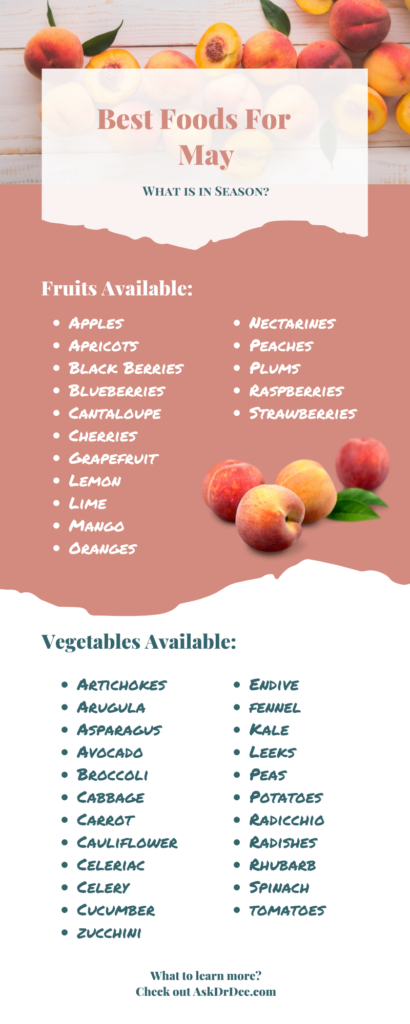
In The Zone Zucchini
Zucchini contains a variety of vitamins, minerals, and beneficial plant compounds. Cooked zucchini is exceptionally high in vitamin A, though raw zucchini contains slightly less. Zucchini boasts several antioxidants that may provide various health benefits. The highest levels are found in the fruit’s skin. Zucchini is rich in water and fiber, two compounds that can promote healthy digestion by reducing your risk of constipation and symptoms of various gut disorders. Zucchini’s fiber may increase insulin sensitivity and stabilize blood sugar levels, potentially reducing your risk of type 2 diabetes. Zucchini’s fiber, potassium, and carotenoids may lower blood pressure, cholesterol, and other risk factors for heart disease. Zucchini is rich in manganese, lutein, zeaxanthin, and vitamins A and C — nutrients that contribute to healthy vision and may lower your risk of age-related eye conditions.
Zucchini is rich in water and fiber yet low in calories, which may help reduce hunger and help you feel full — potentially leading to weight loss over time. Zucchini may benefit bone, thyroid, and prostate health. It may also have anti-cancer properties. However, more research is needed before solid conclusions can be made. Zucchini can be eaten raw or cooked in soups, stews, sandwiches, salads, baked goods, and more.
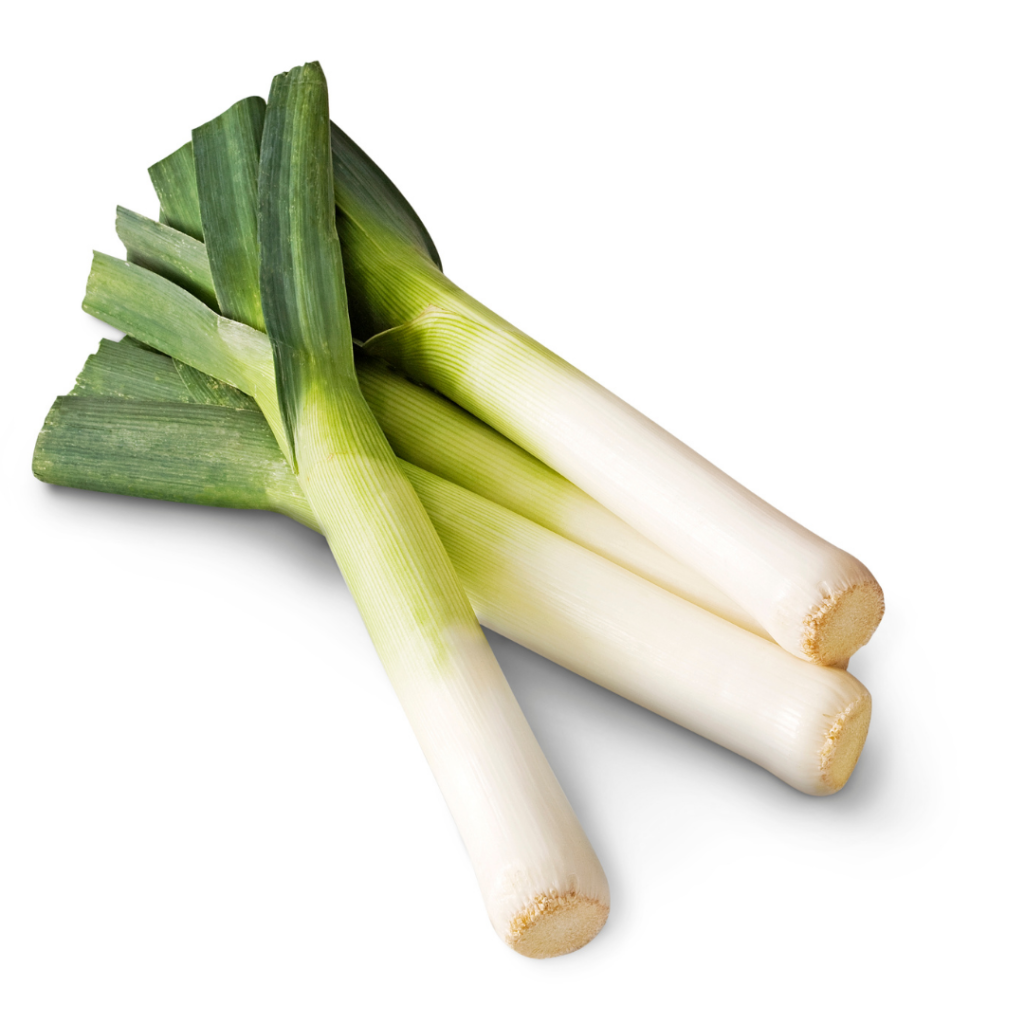
Loving Leeks
Leeks are rich in vitamin A, one of the nutrients necessary for the eyes to function properly. They are also loaded with antioxidants that help the eyes combat environmental pollutants or allergens they might encounter. Lastly, leeks are good sources of zeaxanthin and lutein, which shield the eyes, thus helping prevent cataracts. The antioxidants in leeks combat these aging elements and can make you cleaner, healthier, and glowing. Leeks also contain allicin, an anti-bacterial agent that keeps germs at bay. These prominent onion family members are also good for your heart – they contain kaempferol, which protects the blood vessels. They also contain small amounts of nitric oxide, which helps dilate and relax blood vessels.
Another healthy ingredient in leeks is potassium. This nutrient helps regulate tension in blood vessels to keep a steady flow of blood streaming through your veins and arteries. Potassium also helps to regulate hormone levels in the body and maintain a good acid/base balance in the digestive system. Anemia, a low concentration of red blood cells in the blood, can cause some troubling symptoms, including fatigue, low mental alertness, and general weakness. Leeks are a good source of iron and B vitamins, which combat anemia and boost the body’s red blood cell count. The antioxidant vitamins in leeks benefit weekend warriors; they lessen inflammation from sore muscles, bruises, and strains. Leeks contain vitamin K, which is needed to produce a protein called osteocalcin successfully. Osteocalcin is essential for good bone health and wards off osteoporosis.
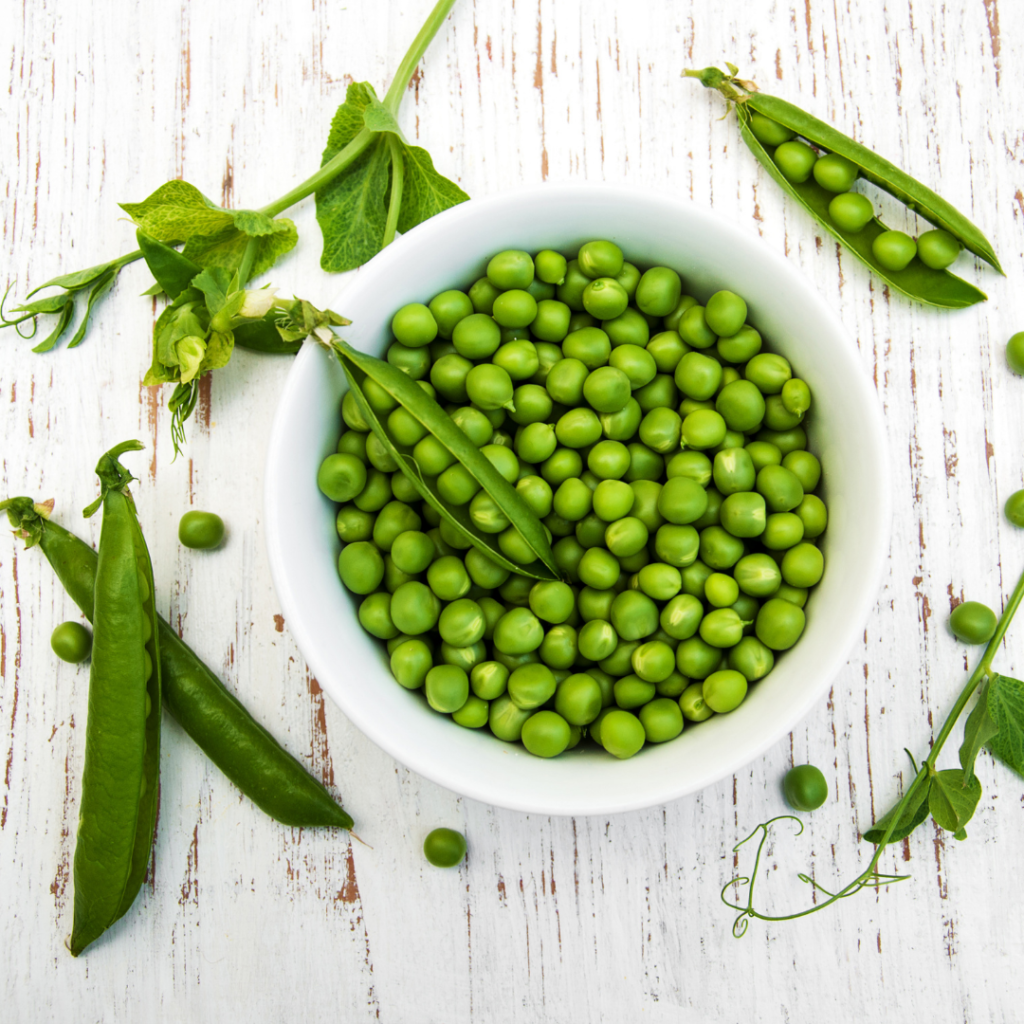
Perfect Peas
Peas are high in protein, one of the biggest reasons people want to add them to their diet. They are also high in fiber, making them a great way to promote weight loss. Peas can help regulate blood sugar levels and heart health. They are great at improving liver function and reducing the risk of kidney disease. Peas are high in anti-inflammatory and antioxidant properties, which are excellent for anti-aging. Their high levels of micronutrients make them ideal for aiding in pregnancy. Peas not only help improve bone strength but also boost muscle thickness. They help lower cholesterol levels and improve eyesight. Not to mention, peas are also great for increasing energy levels and boosting your immune system. Now that you have a few new reasons to love peas, here is a fantastic recipe to ensure you get them into your diet.
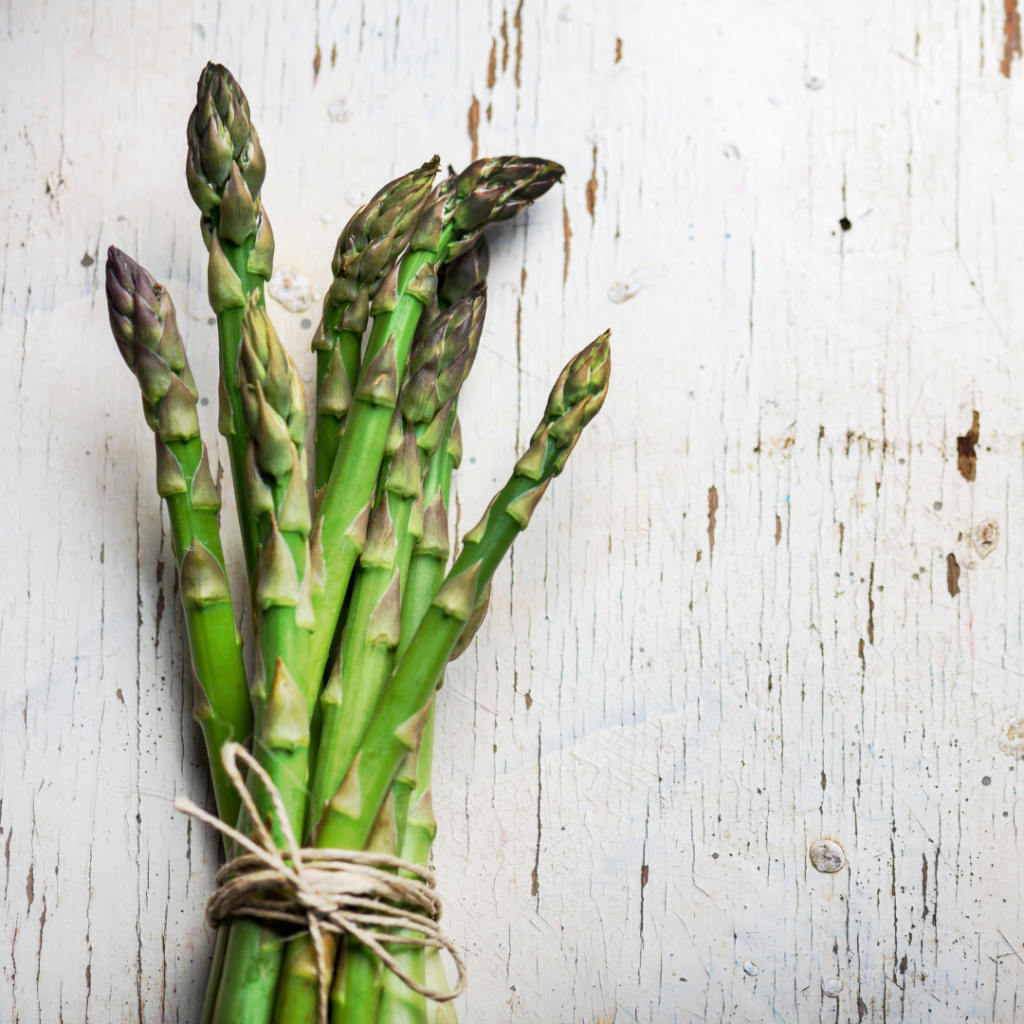
Awesome Asparagus
Asparagus is great for weight loss for several reasons. One of the reasons is its high fiber content. It is also a natural diuretic and contains inulin, which aids digestion by increasing the amount of good bacterial flora. Asparagus is excellent for regulating blood sugar levels and contains saponins such as diosgenin, which help improve blood pressure. It helps to detox the body and increase energy levels due to its high concentration of B-complex vitamins. Asparagus also helps increase the production of red blood cells, and the vitamin K content helps promote heart and bone health. But wait, there’s more. Asparagus is high in anti-inflammatories and antioxidants and contains glutathione, which detoxifies and fights carcinogens. It is a vegetable that should make it on your plate this season!
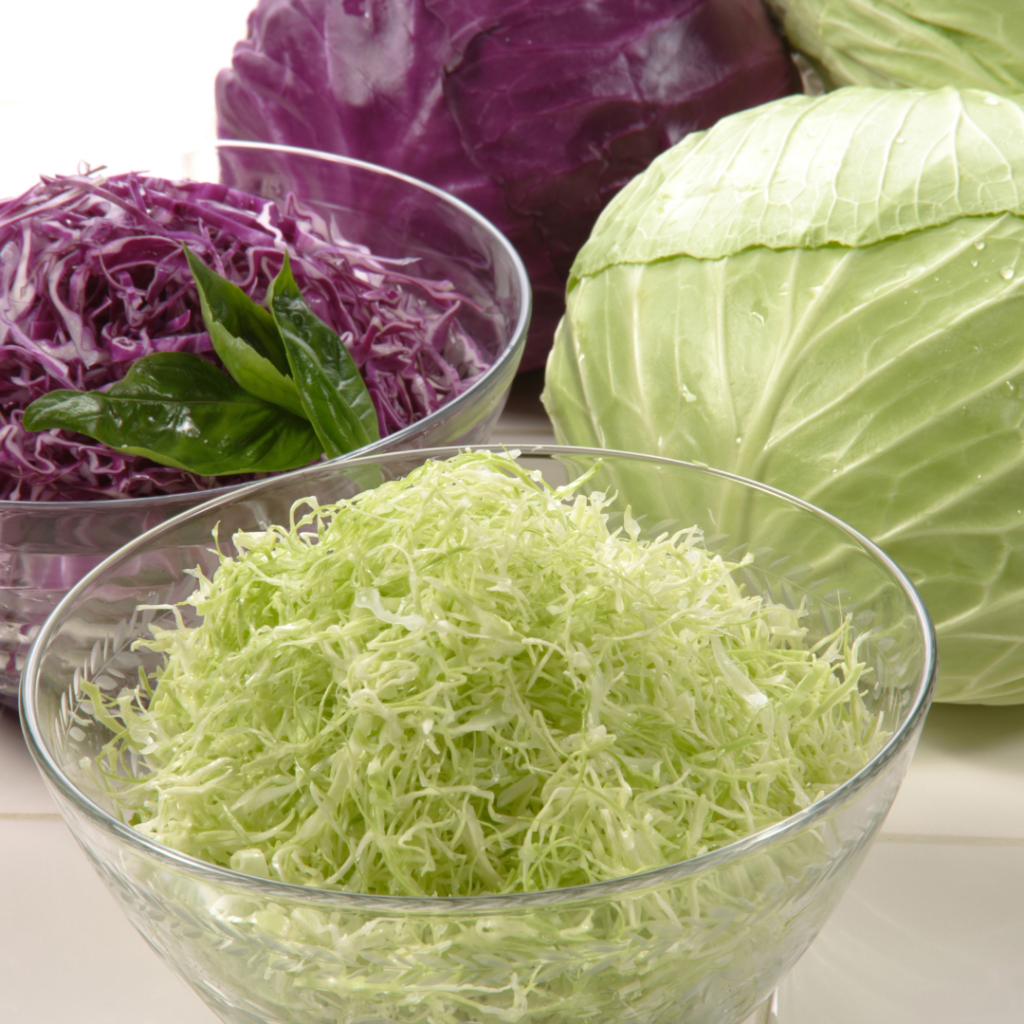
Cleansing Cabbage
Cabbage is a leafy vegetable of the Brassica family, including broccoli, cauliflower, and Brussels sprouts, and it’s one of the oldest known vegetables. Its fiber and water content can help to prevent constipation and maintain a healthy digestive tract. With a mere 33 calories per cup, cabbage is high in fiber and contains zero fat. Cabbage is frequently recommended to people who want to lose weight since it is packed with many nutrients, and its high fiber content makes it quite filling. Cabbage can also be used to help lower your cholesterol. Its fiber and nutrients bind with bile acids in the intestine and pass out in the stool rather than being absorbed into the blood. Eating it steamed gives it more cholesterol-lowering power. Cabbage is an excellent source of the ever-so-important vitamin C, crucial for maintaining a robust immune system. The sulfur-containing compound, sulforaphane, which gives these vegetables their bitter taste, also gives explicitly them their cancer-fighting power. Sulforaphane has been shown to inhibit the progression of cancer cells. Anthocyanins, the powerful antioxidants that give red cabbage its vibrant color, have been shown to slow the formation and even kill already-formed cancer cells.
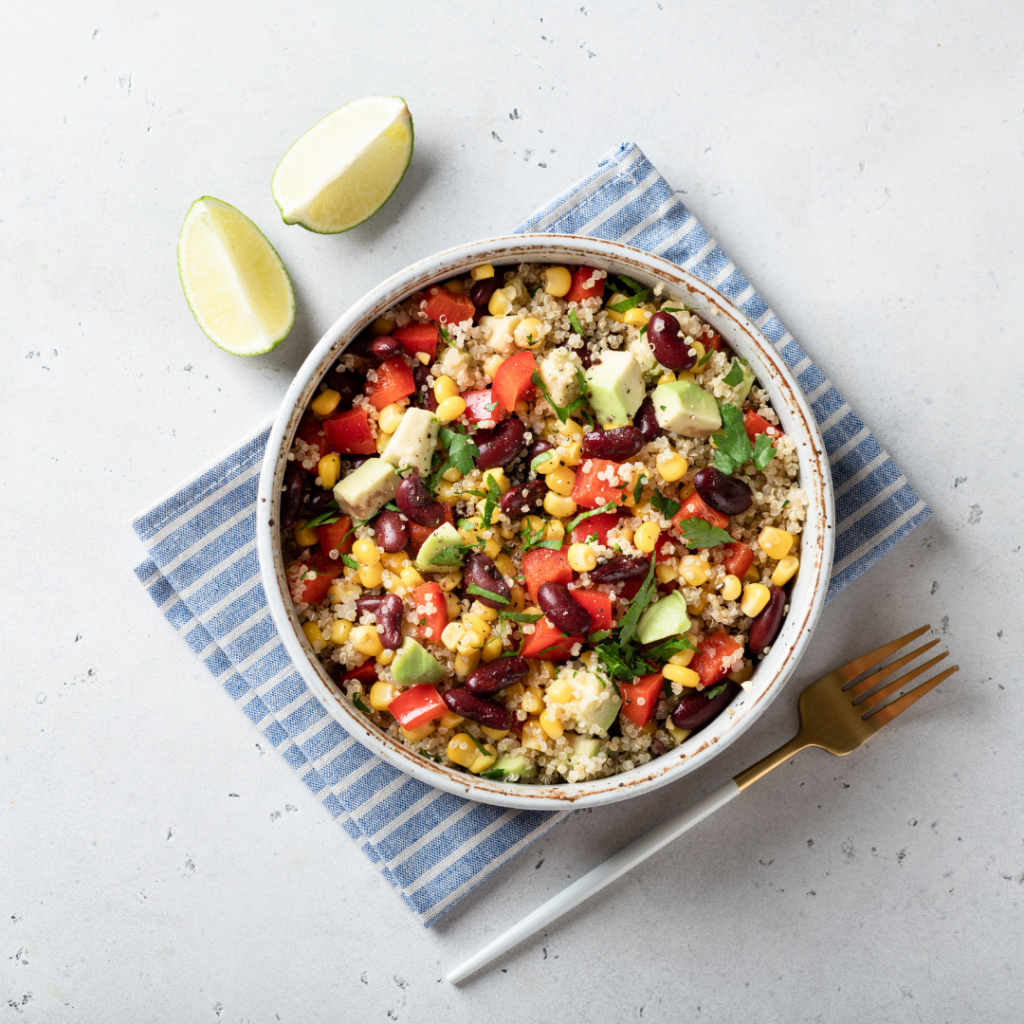
Black Bean Quinoa Salad
Gluten-Free, Vegan, Serves 4
- 1 cup cooked quinoa
- 1 can black beans, drained and rinsed
- 1 red bell pepper, diced
- 1/2 red onion, diced
- 1/2 cup fresh cilantro, chopped
- 1 avocado, diced
- 1 jalapeño pepper, seeded and minced
- 1/4 cup lime juice
- 1 tbsp olive oil
- 1 tsp ground cumin
- 1/2 tsp chili powder
- Salt and black pepper, to taste
Directions:
In a large mixing bowl, combine the cooked quinoa, black beans, diced red bell pepper, diced red onion, and chopped cilantro. Add the diced avocado and minced jalapeño pepper, and gently stir to combine. Whisk together the lime juice, olive oil, ground cumin, chili powder, salt, and black pepper in a small mixing bowl. Pour the dressing over the salad and toss everything together until it’s well-coated. Taste the salad and adjust the seasoning as needed, adding more salt, pepper, or lime juice to taste. Serve the black bean quinoa salad immediately, garnished with additional cilantro or avocado if desired.
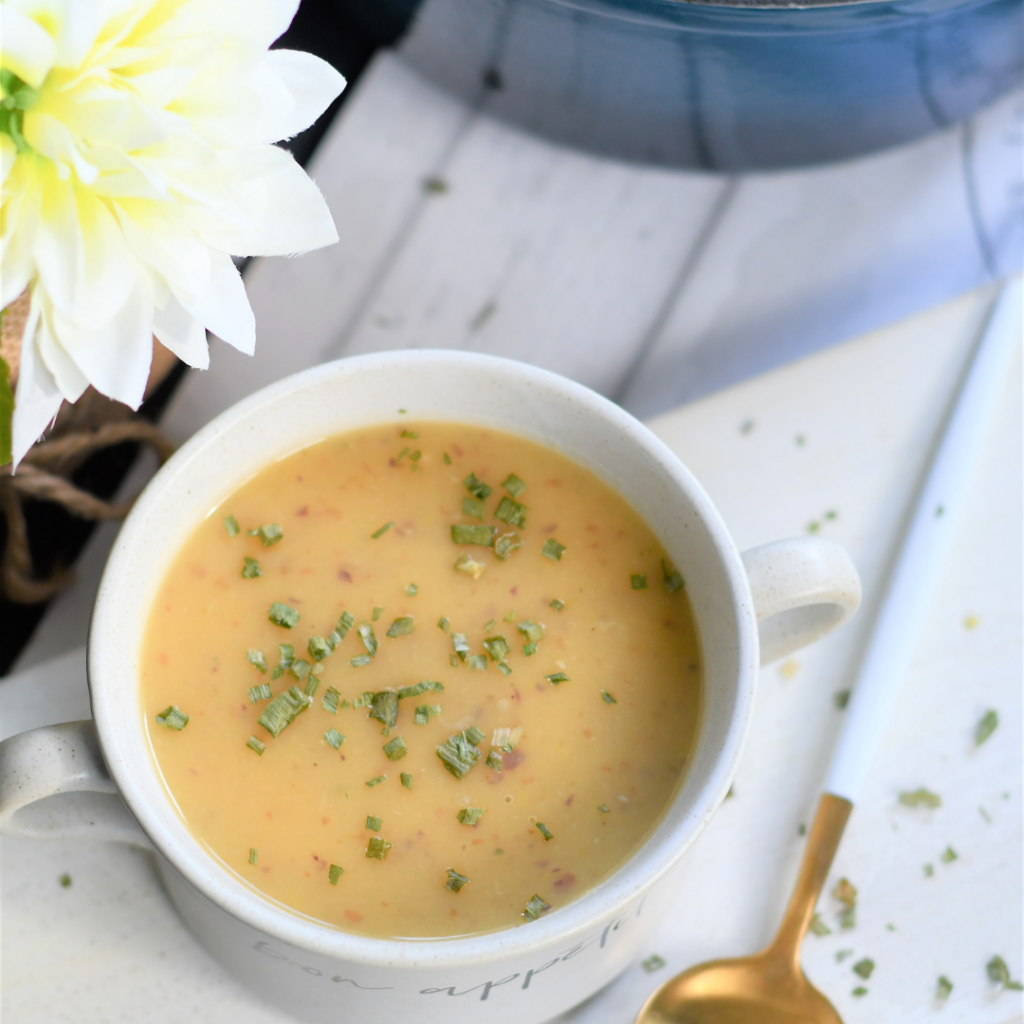
Potato Leek Soup
Gluten-Free, Vegan, Serves 6
- 2 tbsp olive oil
- 2 leeks, white and light green parts only, sliced
- 4 cloves garlic, minced
- 4-5 large potatoes, peeled and cubed
- 4 cups vegetable broth
- 1 cup unsweetened almond milk
- Salt and black pepper, to taste
- Fresh chives or parsley, chopped, for garnish
Directions:
Heat the olive oil in a large pot over medium heat. Add the sliced leeks minced garlic, and sauté for 5-7 minutes, or until the leeks are soft and fragrant. Add the cubed potatoes to the pot and sauté for another 5-7 minutes, or until the potatoes brown. Pour in the vegetable broth and bring the mixture to a boil. Reduce the heat to low, cover the pot, and simmer for 20-25 minutes or until the potatoes are very tender. Using an immersion blender, blend the soup until it’s completely smooth. Add the almond milk to the soup and stir until it’s well combined. Season the soup with salt and black pepper to taste. Serve the potato leek soup hot, garnished with fresh herbs if desired.
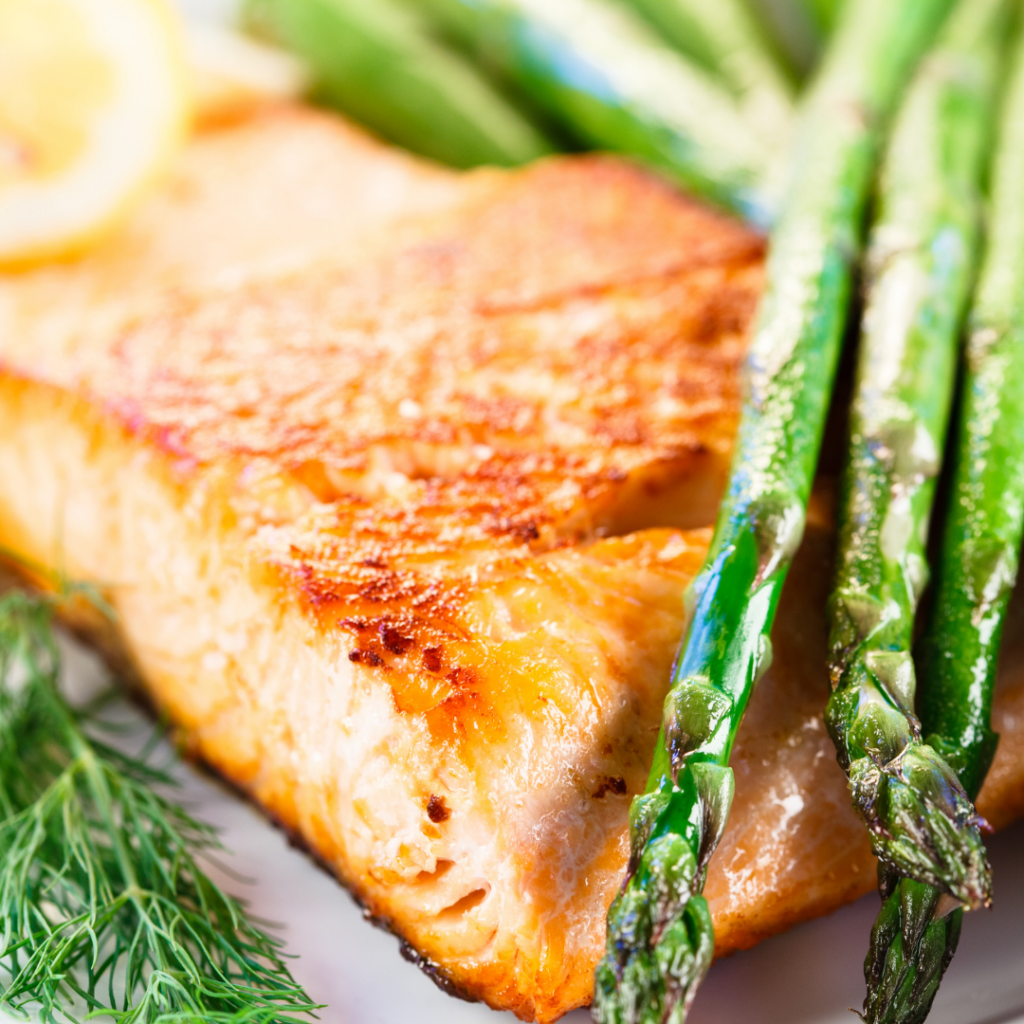
Roasted Salmon with Potatoes and Asparagus
Gluten-Free, Dairy-Free, Serves 4
- 4 salmon fillets
- 1 lb baby potatoes, halved
- 1 lb asparagus, trimmed
- 3 tbsp olive oil
- 1 tbsp garlic powder
- 1 tbsp onion powder
- Salt and black pepper, to taste
- Lemon wedges for serving
Directions:
Preheat your oven to 425°F (220°C). Line a large baking sheet with parchment paper. Arrange the halved potatoes on one side of the baking sheet and the trimmed asparagus on the other. Drizzle 2 tbsp of olive oil over the potatoes and asparagus, and season with garlic powder, onion powder, salt, and black pepper to taste. Toss the vegetables to coat them evenly, then spread them out in a single layer. Roast the potatoes and asparagus in the oven for 20-25 minutes or until tender and slightly browned.
While the vegetables are roasting, prepare the salmon fillets. Rub the salmon fillets with 1 tbsp of olive oil and season with salt and black pepper to taste. After the vegetables have roasted for 20-25 minutes, push them to the sides of the baking sheet to make room for the salmon fillets. Place the salmon fillets in the center of the baking sheet and return the sheet to the oven. Roast the salmon and vegetables for 10-15 minutes or until the salmon is cooked and flakes easily with a fork. Serve the hot roasted salmon, potatoes, and asparagus with lemon wedges on the side.

Lemon Mascarpone Pancakes
Gluten-Free, Vegan, Serves 2
- 1 cup gluten-free flour blend
- 1 tbsp baking powder
- 1/4 tsp salt
- 1/4 cup granulated sugar
- 1 cup non-dairy milk (such as almond milk)
- 2 tbsp lemon juice
- 1 tbsp lemon zest
- 1/4 cup vegan mascarpone cheese
- 2 tbsp coconut oil, melted
- 1 tsp vanilla extract
- Powdered sugar for serving
Directions:
Whisk the gluten-free flour, baking powder, salt, and granulated sugar in a large mixing bowl. Whisk the non-dairy milk, lemon juice, and zest in a separate mixing bowl. Add the vegan mascarpone cheese, melted coconut oil, and vanilla extract to the wet ingredients and whisk until smooth. Stir the wet and dry ingredients until a smooth batter forms. Heat a non-stick skillet or griddle over medium heat.
Once the skillet is hot, use a 1/4 cup measure to pour the batter onto the skillet, making circular pancakes. Cook the pancakes on one side for 2-3 minutes until bubbles form on the surface. Flip the pancakes and cook on the other side for 1-2 minutes until golden brown. Repeat with the remaining batter until all the pancakes are cooked. Serve the lemon mascarpone pancakes hot, dusted with powdered sugar.
Get Started Today
Keeping your body free of toxins and free radicals is necessary to maintain a healthy life and mind. You can add tons of foods to your regular diet to help your body with its critical detoxifying processes. If you want a safe and all-natural way to detox your body at home, check out my Balancing Abundance Program. Because detoxing is so essential and realistically, everyone should be doing it on at least a seasonal basis, I have put together a program to help you do just that.
Here’s the thing: I know working with me one-on-one can seem challenging (due to limited space), and I wanted to be able to give everyone an additional solution that has no limits. You deserve to be happy, healthy, and successful at everything you do, so here are some recipes to help set you up for success!

Need A Hand?
A happy and healthy life is closer than you may think. We all have to deal with our health daily, which shows when we don’t feel our best. If you are tired of just making it through your day, you NEED to start investing in your health today! You are not alone on this journey. If you need help, I am always here to do that. Even if it is something as small as acting as a sounding board, do you have any questions or concerns I can help you with? Feel free to contact me directly at [email protected] or book a one-on-one call. Be sure to subscribe to gain access to tons of free goodies, and check back daily for more great recipes and information!

